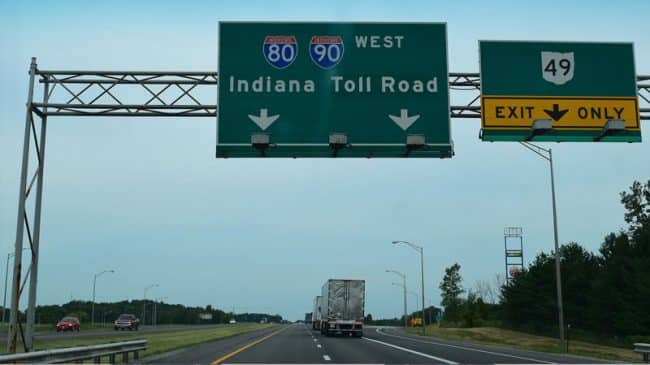In recent years, some state and local governments have taken steps to turn over the operation of public sector toll roads to private sector investor-operator teams, in order to improve their financial and operational performance and stretch traditional transportation dollars further. To help policymakers elsewhere understand the opportunity leasing public sector toll roads could offer to their jurisdictions, this policy brief examines the results from the Indiana Toll Road (ITR) lease thus far.
Topics discussed in the policy brief (see link below) include:
Context. In 2006, Indiana faced a multibillion-dollar transportation funding gap. Moreover, the ITR was losing money, with toll rates not having increased in 20 years, resulting in deferred maintenance and under-investment. This changed when the state reached financial close on a lease agreement with the Indiana Toll Road Concession Company (ITRCC). In return for a $3.8 billion upfront payment to the state, ITRCC was granted the rights to operate, maintain and collect revenue from the 156-mile toll road for 75 years-subject to a detailed contract establishing rigorous performance standards and enforceable provisions.
Lease Proceeds. The state invested the bulk of the $3.8 billion lease payment into new and upgraded transportation infrastructure. It also repaid $200 million in outstanding ITR debt and invested $500 million into a “Next Generation Trust Fund”, which is designed to provide stable, long-term maintenance funding for new transportation infrastructure. As of April 2011, the state had generated $755.5 million in interest income. In essence, then, the ITR lease allowed the state to turn a revenue-losing asset into an asset that is funding billions in transportation investment now and generating hundreds of millions of dollars for the state’s long-term transportation infrastructure needs.
Investment in the ITR. In addition to the $3.8 billion upfront payment to the state, ITRCC also committed to deliver more than $4.4 billion in improvements to the road itself. ITRCC has already installed electronic tolling technology, upgraded toll plazas, added new lanes to reduce congestion and made other key investments that were stipulated contractual requirements in the concession agreement.
Politics. Far from shunning private infrastructure finance and operation after the ITR lease, Indiana policymakers have embraced it by broadening the state’s ability to use that approach. This suggests that once state policymakers actually had direct experience with private infrastructure management via the ITR lease, they increasingly realized that concerns and fears raised prior to the ITR lease regarding private management were overblown.
Overall, the ITR lease has been a major boon for the state of Indiana, leaving it in a far stronger position than it otherwise would have been. Given the overwhelming benefits that Indiana has reaped from leasing its toll road to a private operator, it makes sense for policymakers in jurisdictions with public sector toll roads to explore the potential value of leasing those assets as they develop strategies for closing a long-term mismatch between transportation needs and available funding.

